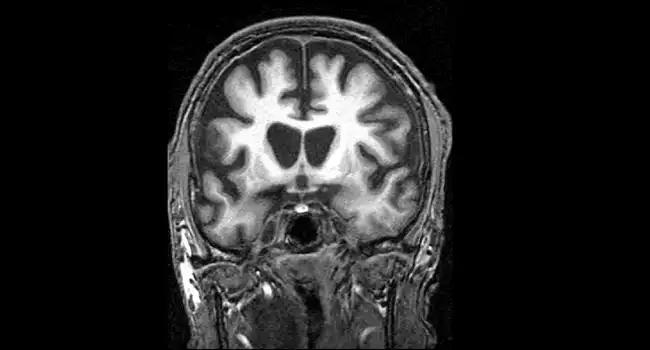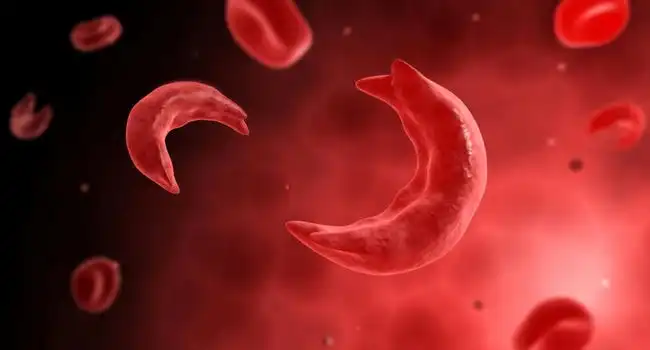The genetic code is the set of instructions contained within DNA and other molecules that allow cells to construct proteins and carry out other vital functions. Mutations are changes in the genetic code that can occur due to a variety of factors, including environmental influences and errors in the replication process. Some mutations are beneficial, while others can impair an organism’s ability to survive and reproduce. The vast majority of mutations are relatively harmless, but some can have a significant impact on an organism’s phenotype or the physical characteristics it displays. Here are 10 of the most common types of mutations among Humans.
10- Lactose Intolerance

Photo Credit: Vaya
Lactose intolerance is a condition in which people lack the enzyme lactase, which is necessary for digesting the sugar lactose found in milk and other dairy products. As such, those who suffer from this condition experience abdominal pain, bloating, gas, and diarrhea after consuming dairy. Mutations in the LCT gene, which codes for the lactase enzyme, are the most common cause of lactose intolerance. These mutations can lead to decreased production of the enzyme and can be classified as primary, secondary, and congenital lactase deficiency.
Primary lactase deficiency is the most common, occurring when the body naturally produces less lactase as it ages. Secondary lactase deficiency occurs when another condition, such as celiac disease or Crohn’s disease, damage the small intestine, reducing lactase production. Congenital lactase deficiency is rare and is present from birth. With the proper dietary modifications, those with lactose intolerance can enjoy a healthy, dairy-free lifestyle.
9- Red Hair

Red-haired people often get a bad rap, but there’s something special about them. It all starts with the gene MC1R, which is responsible for their beautiful, fiery locks. MC1R is a mutation of the melanocortin 1 receptor gene, which is responsible for producing melanin, the pigment in our skin and hair. A mutation of this gene can lead to a variety of hair colors, the most common being red. Red hair is created when MC1R causes the production of pheomelanin rather than eumelanin. Pheomelanin is a protein that creates reddish hues, while eumelanin creates brown, black, and blond.
Red hair is also determined by the amount of pheomelanin produced, as well as the combination of other genes. Red hair is the rarest hair color, with only 1-2% of the world’s population having it. This is due to the fact that two copies of the mutated MC1R gene are required, and these copies must come from both parents. Red heads are often blessed with a variety of other features, such as pale skin and freckles, due to the MC1R mutation. So, next time you see a red head, remember that they are special and unique!
8- Diabetes

Mutations in the genes involved in insulin production and action can lead to diabetes. Type 1 diabetes is usually caused by the autoimmune destruction of the insulin-producing beta cells of the pancreas. Type 2 diabetes is often caused by the body’s inability to respond appropriately to insulin. Mutations in the insulin receptor gene can lead to insulin resistance, a hallmark of type 2 diabetes. Other genes associated with diabetes include those involved in the production of glucagon and amylin, hormones that regulate blood glucose levels.
Mutations in genes involved in pancreatic development and beta cell function can also cause diabetes. Many of these mutations are inherited in an autosomal recessive pattern, while others are inherited in an autosomal dominant pattern. The diagnosis of diabetes is based on clinical signs and symptoms and laboratory tests. The treatment of diabetes focuses on controlling blood sugar levels, maintaining a healthy lifestyle and preventing complications.
7- Alzheimer

Photo Credit: Science
Alzheimer’s is the most common type of dementia, affecting millions of people worldwide. It is a progressive disorder that causes memory loss, confusion, and difficulty with daily tasks. Mutations in certain genes have been linked to an increased risk of developing the condition. The most commonly mutated genes are APP, PSEN1, and PSEN2. Mutations in APP cause amyloid protein to accumulate in the brain, leading to cell death and cognitive decline. Mutations in PSEN1 and PSEN2 cause an increase in the production of the protein β-amyloid, which can cause neurons to malfunction. Other genes, including APOE, SORL1, and TREM2, are also associated with Alzheimer’s risk. These mutations can lead to an increased accumulation of amyloid proteins in the brain, resulting in cognitive decline.
6- Down Syndrome

Photo Credit: FirstPost
Down Syndrome is a genetic disorder caused by the presence of an extra copy of chromosome 21. It affects around one in every 700 babies born in the United States. People with Down Syndrome have distinctive physical features, including a flat face, small head and ears, and an upward slant to the eyes. They also have delays in physical growth, intellectual development, and the ability to learn new skills. Common medical issues associated with Down Syndrome include hearing and vision problems, heart defects, and thyroid conditions. People with Down Syndrome often benefit from early intervention therapies and specialized education programs. With proper medical care and support, individuals with Down Syndrome can lead healthy and productive lives.
5- Huntington’s Disease

Huntington’s disease is a genetic disorder that affects the central nervous system. It is caused by a mutation in a gene called huntingtin on chromosome 4. This mutation causes the production of an abnormal protein that accumulates in the brain, leading to progressive nerve cell damage. Symptoms of Huntington’s disease can include difficulty concentrating, abnormal body movements, depression, and dementia. As the disease progresses, patients may experience worsening movement disturbances, cognitive decline, and psychiatric problems. Treatment of Huntington’s disease is largely supportive, focusing on symptom management and lifestyle modifications. Medications are available to help manage the motor and psychiatric symptoms. Physical, occupational, and speech therapy can also help patients maintain their independence. In addition, genetic counseling is available for those at risk of inheriting the mutation. Ultimately, Huntington’s disease is a progressive disorder, and the goal of treatment is to improve the patient’s quality of life.
4- Cancer

Photo Credit: TimesNow
Cancer is caused by mutations that occur in a person’s cells. These mutations cause the cells to grow and divide uncontrollably, forming a mass of abnormal cells. Mutations can be inherited from a parent or acquired from environmental factors. The most common types of mutations associated with cancer are point mutations, deletions, insertions, and chromosomal rearrangements. Point mutations happen when a single nucleotide is changed or added to a gene’s sequence. Deletions involve the removal of one or more nucleotides from the gene’s sequence. Insertions involve the addition of one or more nucleotides to the gene’s sequence. Chromosomal rearrangements involve the exchange of large segments of DNA between two chromosomes. All of these mutations can lead to the development of cancer. Mutations that affect certain genes, known as tumor suppressors, can cause the uncontrolled cell growth associated with cancer.
3- Sickle Cell Disease

Sickle cell disease is a genetic disorder caused by a mutation in the hemoglobin gene. It is marked by red blood cells that take on a curved, sickle shape. These cells tend to clump together, blocking blood flow and oxygen to the body’s organs and tissues. Symptoms of sickle cell disease include anemia, pain, frequent infections, and even organ damage. The sickle cell mutation is passed down from parents to their children, with both parents needing to carry the gene for a child to have the disease.
Diagnostic tests, such as a complete blood count or a hemoglobin electrophoresis, can detect if a person carries the mutation. Treatment options for sickle cell disease include pain management, blood transfusions, antibiotics, and, in some cases, stem cell transplants. It is important to note that there is no cure for sickle cell disease, but the earlier it is diagnosed, the more options a person has to manage their symptoms.
2- Wisdom Tooth Mutation

A wisdom tooth mutation is a common occurrence in many individuals. It often happens when the third set of molars grow in the back of the mouth, causing pressure on the other teeth. This pressure can lead to pain, swelling, and infection. The wisdom teeth can also become impacted, meaning they do not fully emerge from the gums. Crowding, misalignment, and decay can result. In some cases, the mutation may cause the teeth to become impacted and grow in the wrong direction.
Removing the wisdom teeth is the best way to prevent any further issues. It is a relatively simple procedure that can be done by a specialist. The surgery removes the teeth and any surrounding tissue, preventing any further complications. Recovering from the procedure can take a few days and requires careful oral hygiene. Understanding the potential risks and benefits of wisdom tooth mutation is important for maintaining good oral health.
1- Obesity

Obesity is a growing problem worldwide, caused by a number of factors. Genetics, lifestyle and diet all play a role in the development of obesity. Mutations in certain genes can increase the risk of obesity, affecting how the body responds to certain hormones and other factors. Some of the most common mutations associated with obesity include FTO, MC4R, and TMEM18. FTO is a gene that helps regulate hunger and metabolism, and a mutation in this gene has been linked to an increased risk of obesity.
MC4R is a gene involved in appetite control, and mutations in this gene can lead to increased food intake and increased risk of obesity. TMEM18 is a gene involved in appetite control and energy metabolism, and a mutation in this gene has been linked to an increased risk of obesity. Understanding the genetic basis of obesity can help us develop better treatments and interventions to prevent and manage the condition.


